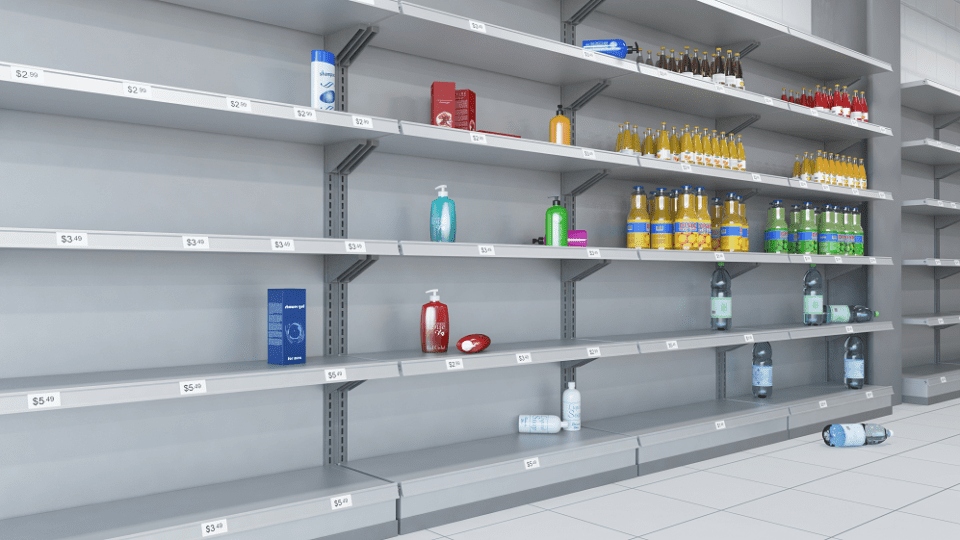Inventory distortion, whether it’s out-of-stocks or overstocks, are a huge and costly challenge for retailers and suppliers, and too often a source of great inconvenience to consumers. A recent study by IHL Group projects that the global cost of inventory distortion in 2023 will be $1.77 trillion — bigger than the combined retail GDP of all of Latin America. But as ghastly as this figure is, it is down by $172 billion from 2022.
The spike in inventory distortion does need to be put into historical context. According to the report, titled Inventory Distortion: The Good, the Bad and the Ugly, “To be fair, the last few years could be said to be the most challenging years in modern retailing, starting with COVID lockdowns that caused massive shortages, causing retailers to overstock merchandise as economies reopened only to have an unexpected war that created millions of refugees, rapid energy price inflation and the largest supply country [China] remaining in lockdowns.”
Inventory distortion, which is equivalent to 7.2% of retail sales, has multiple causes, including inaccurate demand planning, lack of inventory visibility and inadequate staff training. The report cited vendor issues as the primary driver of both out-of-stocks and overstocks in 2023, contributing $417.7 billion, “but down $174 billion and after 2022 showing tremendous improvement in product availability,” according to the report. “Theft has contributed $379 billion this year: nearly $203 billion by consumers and approximately $175 billion by employees.
North America’s Retail Problems are ‘Ugly’
The IHL study examined inventory distortion in four global regions: EMEA, Latin America, Asia/Pacific and North America. While the first three regions all achieved modest but measurable single-digit declines in out-of-stocks between 2022 and 2023, in North America out-of-stocks increased 17.7% — and the report blames retail theft for a large portion of this jump.
“The primary drivers of this increase [in North America] are empty shelves, which have risen by 22.8% ($29.6 billion),” said the report. “The supply chain has stabilized, but now a new (well, not really new) problem has reared its ugly head in the form of an increase in organized retail crime (ORC) that has more than negated other improvements. While a problem across the U.S., the issue is particularly acute in major cities in California, Oregon, Washington and New York, leading to retailers locking up most, if not all merchandise or removing stores altogether.” IHL estimates the cost of ORC in the U.S. alone at $100 billion.
North American retailers’ labor struggles also are having an outsize impact in the region. Incidents of customers unable to find an associate to help them increased 36.3% this year over 2022, compared to just a 10% increase worldwide. Even when associates were available, customers who “found someone but couldn’t find the item” increased by 17.6% in North America, compared to just 1.4% worldwide.
Some Good News: Overstocks Improve 23.1%
Even factoring in North America’s challenges, retailers in all four global regions were able to improve inventory distortion by an average of 8.9% this year. Reductions in overstocks have been a big help, improving 23.1% this year compared to last. “The radical shock to the world economy from Russia’s invasion of Ukraine in 2022 found many retailers who had stocked up for post-COVID ‘revenge buying’ stuck with the wrong merchandise for a tighter consumer and higher energy prices,” according to the report. “This has mostly been worked through and demonstrates that retailers are becoming more effective in managing their inventory levels and avoiding excessive stockpiling in 2023.”
Supplier-related issues, while still problematic, are headed in the right direction, declining by $174 billion in 2023 compared to 2022. “We expect this to continue to improve and thankfully many of the issues are targeted at specific products and not as systemic as they have been during the last three years,” according to the report.
AI Could Help Lessen Inventory Distortion
IHL is bullish on the ability of AI and machine learning to mitigate inventory distortion’s impact, and forecasts that generative AI will only improve its capabilities. The report predicts that retailers could improve their gross margins by 25% or more by 2029 “if they were able to fully take advantage of all the benefits that AI can provide.”
The report noted that AI can help tackle inventory distortion by improving demand forecasting: “AI algorithms can analyze vast amounts of data from multiple sources, such as sales data, customer trends, social media and external factors like weather and events. By identifying patterns and correlations, AI can generate more accurate demand forecasts.”
With AI-powered inventory optimization systems, retailers can streamline their supply chains. “These systems consider multiple factors, including lead times, supplier performance, transportation costs and demand fluctuations, to determine optimal replenishment schedules. By automating this process and considering real-time data, AI can minimize stockouts and overstocks, manage safety stocks, consider sellable and non-sellable supply buckets and reduce the likelihood of further inventory distortion.”
The report also noted that the most advanced AI solutions can realize savings by using analysis “to route online orders to stores with merchandise most likely to go on markdown while also considering the shipping cost. Similarly, these system can optimize which stores can fulfill the complete orders to maximize margins and optimize sustainability rather than shipping from multiple locations.”
While inventory distortion continues to be a monumental problem, the industry has made progress in a number of areas. But the job is far from over: “While retail sales were rapidly growing post-COVID the cost of overstocks and out-of-stocks could be put on the back burner due to even greater increases in sales,” according to the report. “But as the world economy has slowed, fixing inventory issues is all the more critical to preserving or improving the bottom line.”















